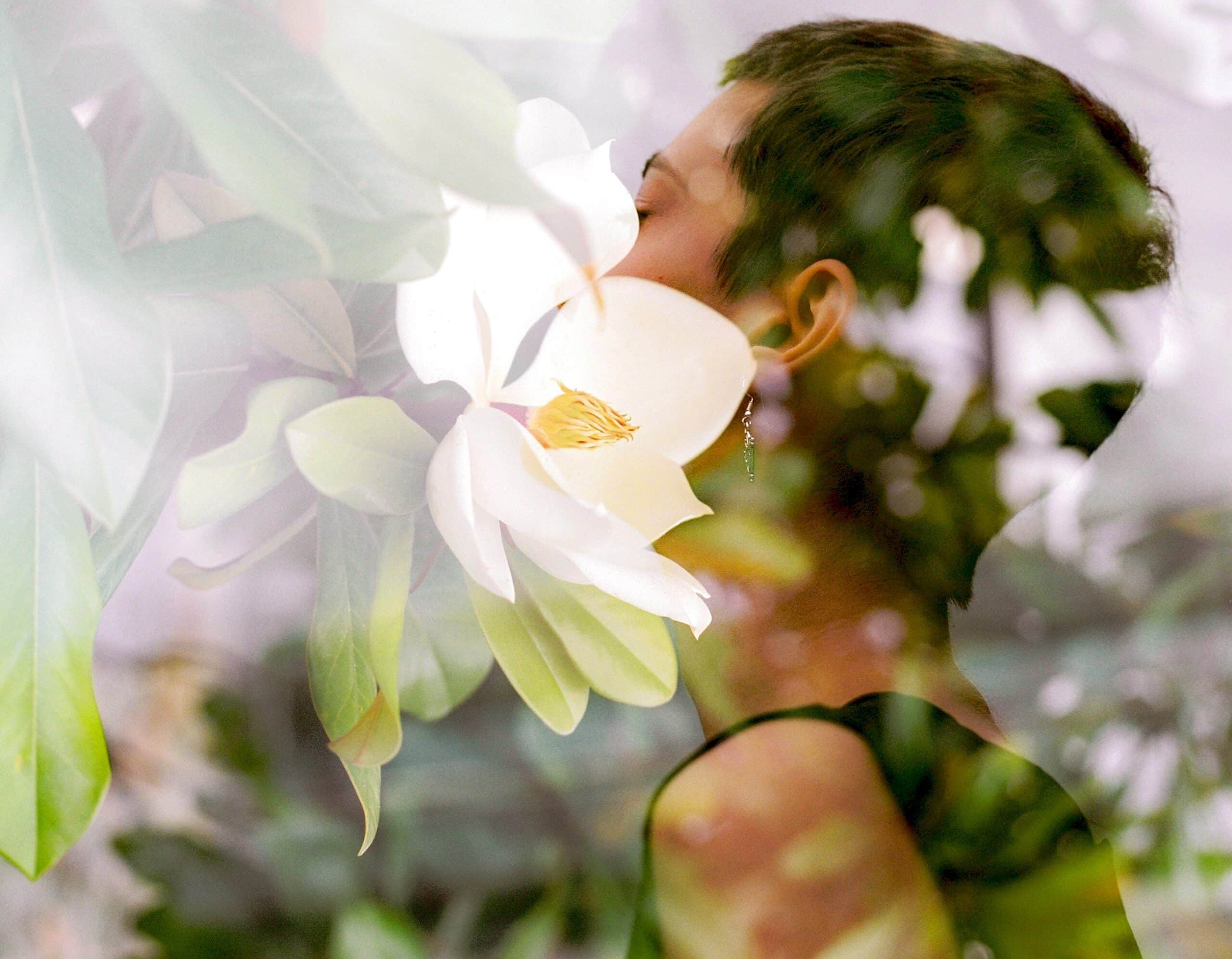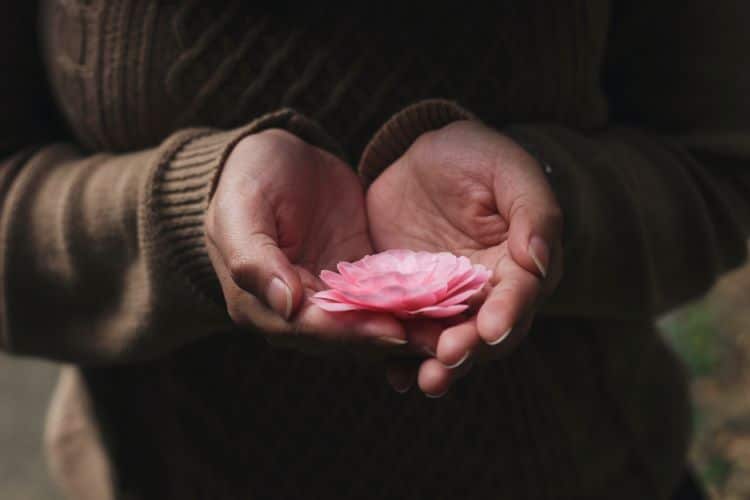When we first become a mindfulness meditation teacher, it can be difficult to speak from our own true voice. We might not know what our unique voice as a teacher sounds like or we might be caught up in trying to emulate other teachers. These are not signs that we do not have a unique voice; they are simply indications that there is more self-discovery to be done. This self-discovery is crucial if we are to blossom into our unique embodiment of what it means to teach mindfulness.

What Does It Mean to Find Your Voice?
Before we start searching for our unique voice as a mindfulness teacher, it can be helpful to clarify what it means to find one’s voice. Voice, in this sense, does not refer to traditional vocal elements (i.e. tone, pace, pitch). Rather, to find one’s voice is to be attuned to our authenticity and to be clear on the truth that we wish to share. When we have found our voice, we are able to share our teachings – and ourselves – with greater confidence, clarity, and ease.
Finding our voice does not happen overnight. It is a process that continually unfolds until we feel stable and secure within ourselves. However, even when that happens, our personal growth continues, which may shape the truth that we wish to share. Self-awareness is a lifelong journey.

“Authenticity means erasing the gap between what you firmly believe inside and what you reveal to the outside world.”
-Adam Grant-
The Importance of Finding Your Voice
If you have begun teaching or wish to teach mindfulness meditation, it is important to uncover your unique voice for many reasons. Some of those reasons include:
When we are teaching from a place of truth and authenticity, everything becomes more natural. Our preparations for classes become more effortless, our interactions with our students become stronger, and our own sense of ease and wellbeing increases. We naturally overcome any ‘imposter syndrome’ we might have previously experienced because we have learned to share who we are, as we are.
How to teach mindfulness with confidence
While there are many reasons we might not feel confident about teaching mindfulness, discovering what our unique voice wishes to say can help us to more naturally embody the role of mindfulness teacher. If you are feeling insecure about what you are sharing (or wish to share), take some time to reflect on your core values, your deepest passions, and your most heartfelt reasons for teaching mindfulness. This will naturally help to build your confidence as a teacher (along with whatever other self-development techniques you feel drawn to).

Barriers to Authenticity As Mindfulness Teachers
Finding our voice and teaching with authenticity does not always come easy. In fact, it usually doesn’t at first. This is not due to some fault of our own; rather, it is simply how things are when we are learning to do something for the first time. Self-doubt and uncertainty are natural at first because until we have really harnessed our skills, we cannot be 100% sure of our place in this new role.
While having some initial uncertainty about our voice as a mindfulness teacher is natural, there are some common thoughts, feelings, and misunderstandings that can inhibit our ability to discover our true voice. These include:
If you are struggling with finding your voice as a mindfulness teacher or are wondering how to teach mindfulness with greater authenticity, it can be helpful to reflect upon the above. What misbeliefs do you carry about what it means to teach mindfulness or how you ‘should’ sound? Does your base level of self-love and confidence need to grow? Are you afraid of saying the wrong thing and how can you overcome that fear?
Exploring what holds us back can be difficult work. Sometimes, our insecurities around sharing our true selves runs deep. Be patient and compassionate with yourself as you explore this, just as you would guide your students to be kind and loving towards their own thoughts and feelings.

"Authenticity is the daily practice of letting go of who we think we’re supposed to be and embracing who we are.”
- Brené Brown-

7 Resources for Finding Your Voice
For additional insights and practices for how to find your voice as a mindfulness meditation teacher, check out the resources below. Explore the worksheets and listen to the wisdom shared by top mindfulness teachers.
Meditation teacher, author, and visionary leader Spring Washam explores the necessity of being willing to be true to ourselves. She notes that her own journey of finding her voice evolved as her need to heal evolved. Even if we feel our voice is going in a controversial direction, we can trust that our compassion is leading somewhere.
Michael Taft notes that being mindful does not look a certain way – that it has its own flavor with different people. Sean Fargo goes on to explore the notion of ‘embodied presence’ and the importance of being who we are. Can we share from our own experience? Can we share what we know to be true?
By getting clear on what our purpose for teaching mindfulness is, we can ease uncertainty about what we have to share. What is it that drew us to this practice in the first place? What is it about mindfulness that we care so deeply about? Clarifying our vision is a part of clarifying our voice
Mindfulness and performance expert George Mumford explains that sometimes we emulate other teachers before we uncover our own unique voice. Eventually, we start speaking in a way that is our own. He notes that this is a process that continues to evolve. We all have a uniqueness, he says, and we can start to tease that out.
Another way to enhance our unique voice is to commit to the process of self-discovery. We can do this through mindful self-reflection. These 20 questions offer us a place to start, inviting us to inquire into things such as: What are my core values? Do I practice what I preach? When do I feel most like ‘me’?
Mindfulness practice inherently invites us to welcome authenticity, or to embrace this moment as it is. If we embody mindfulness as a teacher, we will naturally evoke a sense of authenticity. Sean also notes that we do not need to ‘sell’ mindfulness or convince our students of anything; embodying it is enough.
Lastly, this mindfulness worksheet for meditation teachers can help us to tap into our heart-centered reasons for sharing these practices and teachings. Though many of us come to mindfulness for similar reasons, we each have a unique purpose or calling. This exercise invites us to ask: What is my deepest intention for these offerings? This type of self-reflection can help us to awaken our deepest personal truth.
Explore our free ‘Mindfulness Meditations for Kids’ course


















